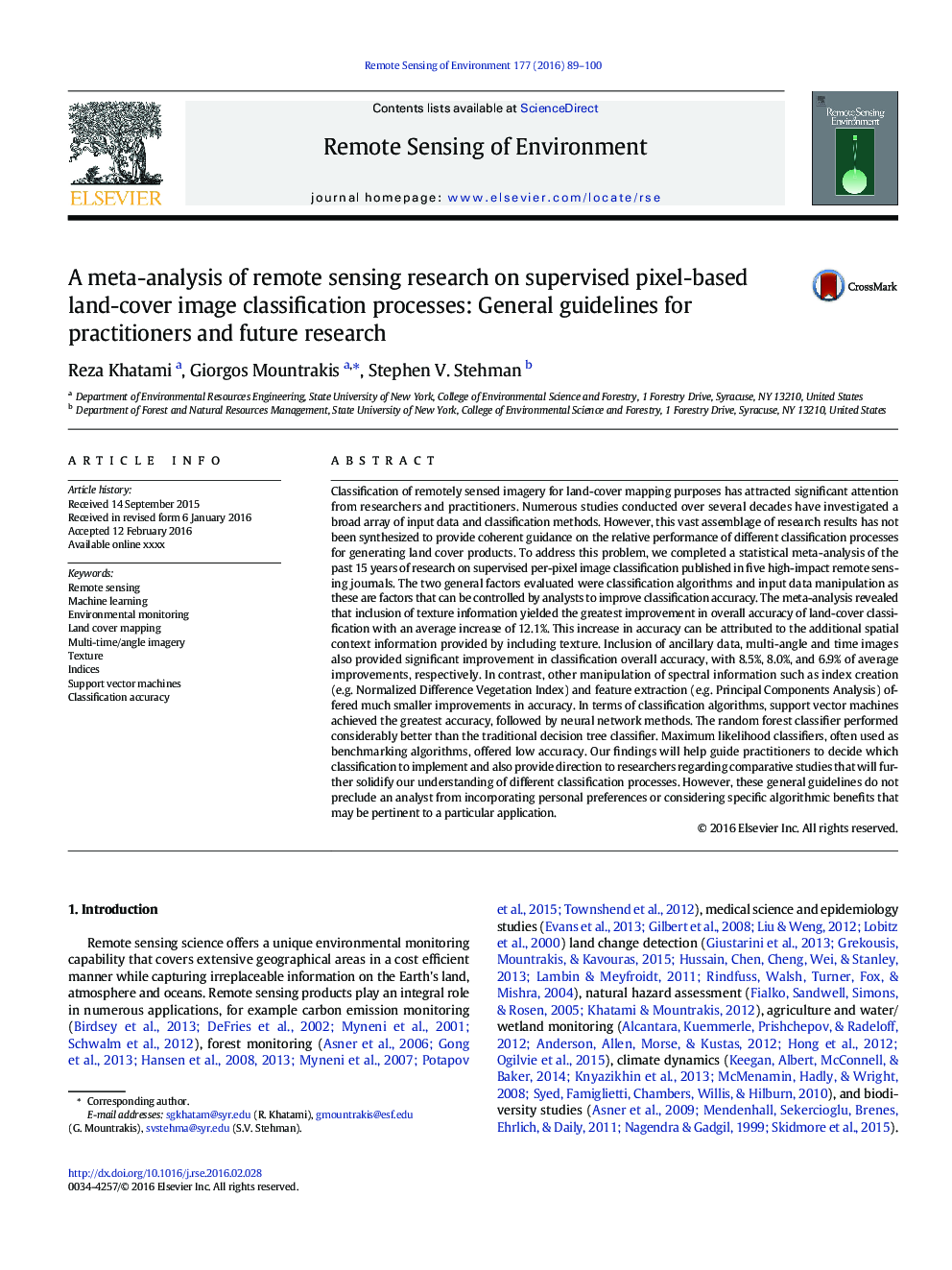| کد مقاله | کد نشریه | سال انتشار | مقاله انگلیسی | نسخه تمام متن |
|---|---|---|---|---|
| 6345417 | 1621223 | 2016 | 12 صفحه PDF | دانلود رایگان |
عنوان انگلیسی مقاله ISI
A meta-analysis of remote sensing research on supervised pixel-based land-cover image classification processes: General guidelines for practitioners and future research
ترجمه فارسی عنوان
یک فرآیند تجزیه و تحلیل تحقیقات سنجش از دور در فرایندهای طبقه بندی تصویری مبتنی بر پیکسل تحت نظارت: دستورالعمل های عمومی برای پزشکان و تحقیقات آینده
دانلود مقاله + سفارش ترجمه
دانلود مقاله ISI انگلیسی
رایگان برای ایرانیان
کلمات کلیدی
سنجش از دور، فراگیری ماشین، نظارت بر محیط زیست، نقشه برداری زمین، تصاویر چند زاویه / زاویه، بافت، شاخص ها، ماشین آلات بردار پشتیبانی، دقت طبقه بندی،
موضوعات مرتبط
مهندسی و علوم پایه
علوم زمین و سیارات
کامپیوتر در علوم زمین
چکیده انگلیسی
Classification of remotely sensed imagery for land-cover mapping purposes has attracted significant attention from researchers and practitioners. Numerous studies conducted over several decades have investigated a broad array of input data and classification methods. However, this vast assemblage of research results has not been synthesized to provide coherent guidance on the relative performance of different classification processes for generating land cover products. To address this problem, we completed a statistical meta-analysis of the past 15Â years of research on supervised per-pixel image classification published in five high-impact remote sensing journals. The two general factors evaluated were classification algorithms and input data manipulation as these are factors that can be controlled by analysts to improve classification accuracy. The meta-analysis revealed that inclusion of texture information yielded the greatest improvement in overall accuracy of land-cover classification with an average increase of 12.1%. This increase in accuracy can be attributed to the additional spatial context information provided by including texture. Inclusion of ancillary data, multi-angle and time images also provided significant improvement in classification overall accuracy, with 8.5%, 8.0%, and 6.9% of average improvements, respectively. In contrast, other manipulation of spectral information such as index creation (e.g. Normalized Difference Vegetation Index) and feature extraction (e.g. Principal Components Analysis) offered much smaller improvements in accuracy. In terms of classification algorithms, support vector machines achieved the greatest accuracy, followed by neural network methods. The random forest classifier performed considerably better than the traditional decision tree classifier. Maximum likelihood classifiers, often used as benchmarking algorithms, offered low accuracy. Our findings will help guide practitioners to decide which classification to implement and also provide direction to researchers regarding comparative studies that will further solidify our understanding of different classification processes. However, these general guidelines do not preclude an analyst from incorporating personal preferences or considering specific algorithmic benefits that may be pertinent to a particular application.
ناشر
Database: Elsevier - ScienceDirect (ساینس دایرکت)
Journal: Remote Sensing of Environment - Volume 177, May 2016, Pages 89-100
Journal: Remote Sensing of Environment - Volume 177, May 2016, Pages 89-100
نویسندگان
Reza Khatami, Giorgos Mountrakis, Stephen V. Stehman,
